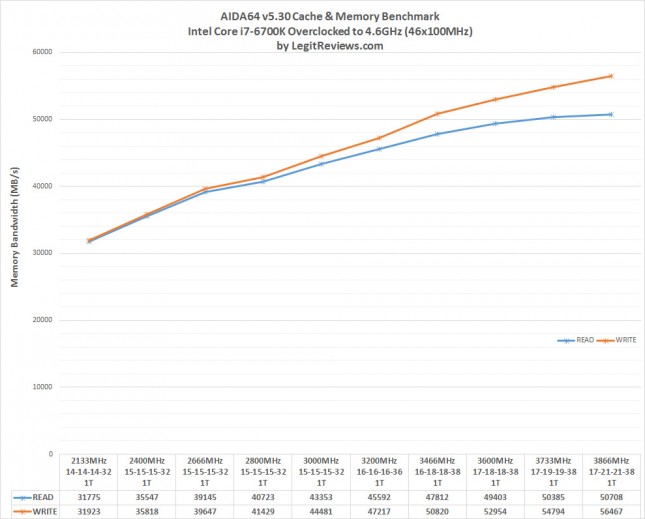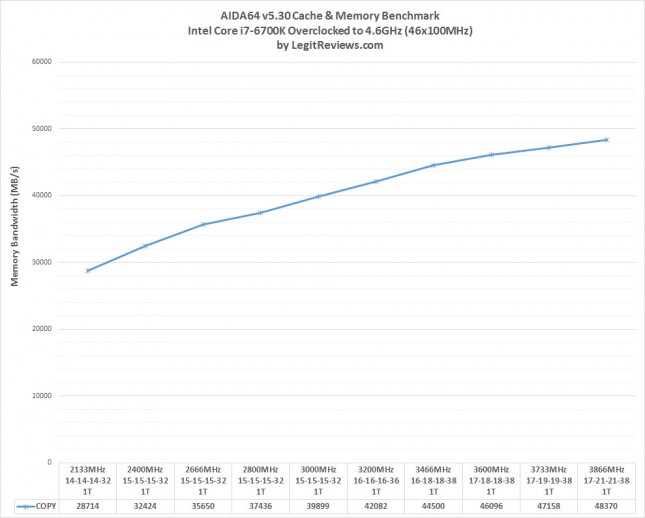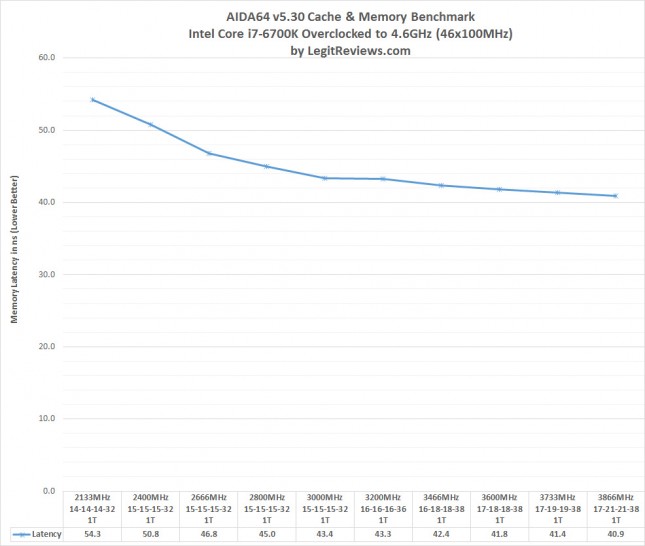DDR4 Memory Scaling on Intel Z170 – Finding The Best DDR4 Memory Kit Speed
AIDA64 Extreme Edition 5.30 Beta:
AIDA64 Extreme Edition 5.30 software (website) is an excellent benchmarking tool for looking at memory performance on any desktop PC. This version of AIDA64 implements full support for the upcoming Intel Skylake processors, adds advanced support for Microsoft Windows 10 and Windows Server 2016 operating systems, and supports the latest graphics and GPGPU computing technologies by both AMD and nVIDIA. AIDA64 Extreme 5.30 software is free to try with limited features or $39.95 to buy with 1-year of free updates.
Benchmark Results: These charts are the largest that we’ve ever used for a memory article as we’ve never tested 10 different clock frequencies in one chart before, so be sure to click on them to open them full size for a better look. On the ASUS Z170-Deluxe motherboard with the Intel Core i7-6700K processor overclocked to 4.6GHz we saw the memory bandwidth increase rather dramatically as we increased the DDR4 frequency. With the slowest DDR4-2133 dual channel memory kit on the market we were just shy of 32,000 MB/s of read/write memory bandwidth and by the time we got up to DDR4-3866 we were running over 50,000 MB/s! The write memory bandwidth went from 31,923 MB/s to 56,467 MB/s, which is a massive 24,544 MB/s or 76.9% increase in the effective write bandwidth. The performance increase was found to be fairly consistent until the very end when we had to begin increasing the memory timings to achieve the clock speeds we were trying to get.
Benchmark Results: Similar performance gains were seen on the AIDA64 v5.30 copy test. We started out at 28,700 MB/s with a DDR4 clock frequency of 2133 MHz and ended up at 48,400 MB/s when we topped out at 3866 MHz.
Benchmark Results: The latency of the memory decreased as the DDR4 DRAM clock speed increased despite having to loosen the timings in the UEFI along the way. At DDR4-2133 we averaged 54.3ns then reached 43.4ns at DDR4-3000 and then finally 40.9nm at DDR4-3866.



